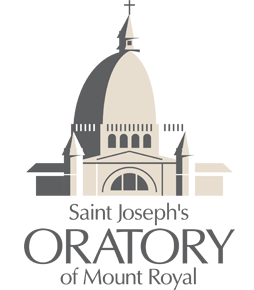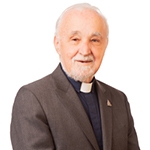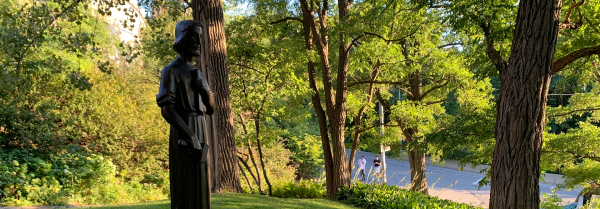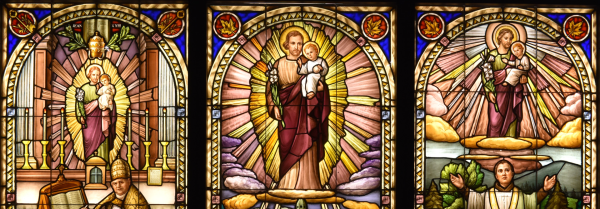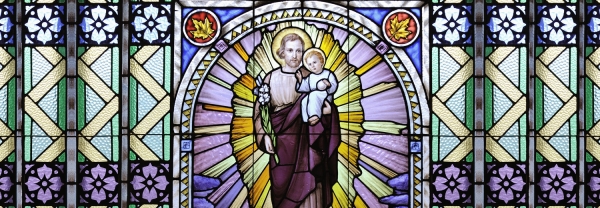The Presentation of Jesus at the Temple
Today’s liturgy is the result of a long evolution in which two elements come together. A celebration of the presentation of Jesus in the temple and a celebration of light.
On Christmas night we celebrated Christ, who came to be the Light of the World. Forty days later, this light enters the temple. The temple, which for the Jewish people was the place of God’s presence among his people, now receives the Light of the World.
The ancient rituals of presentation in the temple and purification are suddenly transformed by a light and two people, witnesses of this waiting people, are present to welcome the one who comes to illuminate the temple. They are there to testify that the time of waiting is over and that the time of full realisation of the promise has arrived.
Simeon is, so to speak, the embodiment of this waiting people; he can now go in peace.
Simeon goes on to bless Mary and Joseph. His words, however, hint at the hard road ahead for the One who came to be a “Light to all nations” to complete his work of salvation. Not everything will be done without suffering. To enlighten all nations, Jesus will have to carry his cross so that a new light will shine on Easter morning.
Simeon can leave in peace, the time of long waiting is over, but Mary and Joseph are already at the dawn of this new reality which has just been born and which calls for a commitment. They are the first to consecrate their lives, to allow this new light to spread. Standing in the temple in Jerusalem, a man and a woman proclaim that the time of waiting is over; another man, Joseph, and another woman, Mary, are the first to commit themselves to living this new life.
In Jewish tradition, the presentation of a first-born son was also an act of consecration. Just as the first fruit of the earth, the first fruit of the womb was offered to God. Symbolically the parents offered the child to God so that his or her life would be consecrated to God’s service. In the case of Jesus, however, this gesture had a deeper meaning. This child would be entirely dedicated to living according to God’s will.
On this day, as we recall Jesus’ gesture of offering and consecration, we are also invited to pray for those men and women who, in a very special way, dedicate their lives entirely to the Lord.
Even today there are people who commit themselves to following the Lord by dedicating their lives to his service as religious, priests and consecrated lay people.
The forms of consecrated life are many, but they all express the deep desire to live out in an explicit way this lifelong commitment to follow the Gospel in the footsteps of Jesus.
On 2 February 1874, in the chapel of Notre-Dame College, a 28-year-old man made such a commitment. Alfred Bessette, who had taken the name Brother André, agreed to give his life entirely to the Lord as a brother of the Congregation of Holy Cross. The community saw in him a humble man, always ready to serve others and above all a man of prayer.
Brother André understood that his life as a consecrated man called him to give himself completely to the service of others and to prayer.
It was not enough to do well what his superiors asked of him, he had to seek in everything what the Lord was asking of him. In the suffering of the people who came to him, he discovered a call from the Lord, a call to compassion and a call to lead each person into an intense prayer, a prayer capable of transforming and healing.
Being consecrated to the Lord also meant going out after long hours of work to visit the sick, spending long hours in prayer, even at night. To be consecrated was to speak with love of the One who died for us on the cross, to invite people to discover in Saint Joseph a friend, in Mary a mother, but above all to discover in Jesus a brother who died for love of us, and in God a loving Father.
Brothers and sisters, if the feast of the Presentation reminds us of the presence in the Church of people who, like Saint Brother André, have consecrated their lives in a particular way, it also invites us to become aware that we are all called by our baptism to live in the light of the one whom the old man Simeon recognises as the Light of the World. This light that we carry this morning, just as the light we will carry on Easter night, reminds us that we are all committed to carrying the light of Christ to the world. We are called to let that light illuminate and transform our lives.
The old man Simeon and Anna can now go in peace, they represented a time of waiting that is now over, but those who come after them will be called to live in this light that transforms human beings.
By our baptism we have been consecrated to follow Christ and to make his light shine. Yet it is not easy to remain faithful to this call. We must remain vigilant so that our daily concerns do not diminish this light. Like Saint André and so many consecrated persons, we must root our lives each day in the encounter with the Lord and find, as we do at each Eucharist, that community of brothers and sisters who share our faith and who walk with us in this new temple where Christ, the Light of the World, welcomes us.
